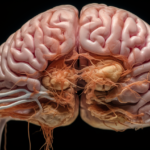
Welcome to a thoughtful exploration of the intersection between Body-Focused Repetitive Behaviors (BFRBs) and Attention-Deficit/Hyperactivity Disorder (ADHD).
This guide aims to illuminate the challenges individuals may encounter in navigating these intertwined conditions.
Join us on this journey where we’ll unravel the nature of BFRBs, identify their subtle signs, categorize different types, and delve into the distinctive relationship between BFRBs and ADHD.
What is Body-Focused Repetitive Behaviors (BFRBs)
Body-Focused Repetitive Behaviors, commonly known as BFRBs, constitute a group of self-grooming actions characterized by repetitive behaviors that cause harm to the body.
These behaviors may manifest as hair pulling (trichotillomania), skin picking (excoriation disorder), or nail biting.
While often perceived as mere habits, it’s crucial to recognize BFRBs as intricate behaviors intertwined with emotional well-being, serving as coping mechanisms for stress and anxiety.
Signs of Body-Focused Repetitive Behaviors (BFRBs)
Identifying BFRBs involves recognizing certain signs, such as:
Common BFRBs
- Skin picking: Picking at the skin, often resulting in scabs and sores.
- Hair pulling: Pulling out hair from the scalp, eyelashes, eyebrows, or other areas of the body.
- Nail-biting: Biting at the nails, often to the point of bleeding.
Less common BFRBs
- Lip biting or chewing: Biting or chewing on the lips or inner cheeks, often resulting in soreness and bleeding.
- Chewing on objects: Chewing on objects such as pens, pencils, or fingernails.
- Rumination: Bringing up partially digested food into the mouth and re-chewing it.

Types of Body-Focused Repetitive Behaviors (BFRBs)
Exploring the Landscape of Body-Focused Repetitive Behaviors (BFRBs)
Body-Focused Repetitive Behaviors (BFRBs) encompass a spectrum of manifestations that individuals may experience. U
nderstanding these variations is crucial for a comprehensive grasp of the challenges associated with BFRBs.
Here are three prominent types:
Trichotillomania
Trichotillomania involves the compulsive pulling of hair, predominantly from the scalp.
Individuals with this BFRB find themselves unable to resist the urge to tug at their hair, often leading to noticeable hair loss.
This behavior can be a response to stress, anxiety, or a means of seeking comfort.
Dermatillomania
Dermatillomania manifests as the compulsive picking of the skin.
This behavior often goes beyond regular grooming and can result in skin damage.
Individuals with dermatillomania may find themselves caught in a repetitive cycle of picking, which can be triggered or exacerbated by emotional distress.
Onychophagia
Onychophagia involves the compulsive biting of fingernails.
While nail-biting is a common habit for many, in the context of BFRBs, it becomes a repetitive and compulsive action that extends beyond typical grooming behavior.
Body-Focused Repetitive Behaviors (BFRBs) and ADHD
The intriguing link between Body-Focused Repetitive Behaviors (BFRBs) and Attention-Deficit/Hyperactivity Disorder (ADHD) has become a focal point in mental health discussions.
Exploring this relationship unveils a complex interplay between these two conditions, shedding light on how they may influence and exacerbate each other.
Shared roots in stress and anxiety
Research suggests that individuals with ADHD may be more susceptible to developing BFRBs as a coping mechanism for heightened stress and anxiety levels.
The challenges associated with ADHD, such as difficulty in managing attention and impulsive behavior, can contribute to increased stress, fostering an environment conducive to the emergence of BFRBs.
Executive functioning challenges
Both ADHD and BFRBs are associated with difficulties in executive functioning—the cognitive processes responsible for tasks such as decision-making, impulse control, and attention regulation.
The interconnected nature of these challenges can create a scenario where the presence of one condition amplifies the struggles associated with the other.

Challenges in Identifying BFRBs in Individuals with ADHD
Identifying Body-Focused Repetitive Behaviors (BFRBs) within the intricate landscape of Attention-Deficit/Hyperactivity Disorder (ADHD) poses a distinctive set of challenges.
Symptomatic overlap
The symptoms of ADHD, including impulsivity, hyperactivity, and difficulty in maintaining attention, can overshadow the subtler manifestations of BFRBs.
Nail-biting, hair-pulling, or skin-picking may be perceived as mere byproducts of ADHD-related behaviors, leading to a potential oversight of the underlying BFRB.
Masking effect
The coping mechanisms employed by individuals with ADHD, such as fidgeting or restlessness, can serve as a masking effect for BFRBs.
These behaviors may be dismissed as typical expressions of ADHD, further complicating the identification process.
Underreported BFRBs
Individuals with ADHD may not readily report BFRBs, as the focus often centers around managing the primary symptoms of ADHD.
This underreporting can be attributed to a lack of awareness about the significance of BFRBs or a perception that these behaviors are secondary and less impactful.
Strategies for Coping and Management
Coping with Body-Focused Repetitive Behaviors (BFRBs) in the context of Attention-Deficit/Hyperactivity Disorder (ADHD) demands a multifaceted strategy that encompasses self-awareness, targeted behavioral interventions, and a robust emotional support system.
Triggers identification
Understanding the triggers that contribute to the onset of BFRBs is a crucial first step.
For individuals with ADHD, stress, boredom, or moments of inattention may serve as catalysts.
Identifying these triggers empowers individuals to proactively manage and mitigate their impact.
Alternative coping mechanisms
Once triggers are recognized, the focus shifts to cultivating alternative coping mechanisms.
Engaging in activities that redirect restless energy, such as stress balls or fidget toys, provides a healthier outlet.
Behavioral interventions, such as habit reversal training, can be tailored to address specific BFRBs.
Support network building
Establishing a robust support network is fundamental.
This may include friends, family, or mental health professionals who understand the nuances of both ADHD and BFRBs.
Open communication within this network fosters an environment of understanding and empathy.
Mindfulness and relaxation techniques
Incorporating mindfulness and relaxation techniques can be instrumental in managing both conditions.
Practices such as meditation, deep breathing exercises, or yoga contribute to overall well-being and help individuals maintain a centered and focused state of mind.
Therapeutic interventions
Seeking therapeutic interventions, such as cognitive-behavioral therapy (CBT), can provide structured guidance for individuals managing BFRBs and ADHD.
These interventions address the underlying thought patterns and behaviors, offering practical tools for sustained behavioral change.
Tailored ADHD management
Acknowledging the interconnected challenges of ADHD is paramount.
Tailoring ADHD management strategies, which may include medication, behavioral therapy, or educational support, ensures a comprehensive approach that addresses the core symptoms while considering the impact on BFRBs.
Self-monitoring and journaling
Encouraging self-monitoring through journaling allows individuals to track BFRB patterns, emotional states, and ADHD-related challenges.
This self-awareness aids in refining coping strategies over time, promoting a proactive and adaptive approach.

Treatment for Mental Impairment
Recognizing the complex nature of Body-Focused Repetitive Behaviors (BFRBs) and Attention-Deficit/Hyperactivity Disorder (ADHD), seeking professional help becomes a pivotal step toward effective management.
Therapeutic interventions
- Cognitive-Behavioral Therapy (CBT): CBT is a widely recognized therapeutic approach for BFRBs and ADHD. It delves into identifying and modifying negative thought patterns and behaviors, fostering healthier coping mechanisms and addressing the root causes.
- Dialectical Behavior Therapy (DBT): DBT, known for its emphasis on acceptance and change, is effective in managing emotional dysregulation associated with BFRBs and ADHD.
Medication considerations
- ADHD medication: In cases where ADHD symptoms significantly impact daily functioning, medication may be considered. Stimulant medications, such as methylphenidate or amphetamines, are commonly prescribed to enhance focus and attention.
- Comorbid conditions: In instances where BFRBs coexist with ADHD, a comprehensive evaluation by a healthcare professional guides the selection of medications to address both conditions.
Personalized treatment plans
- Individualized approach: Professional help involves the development of personalized treatment plans.
- Collaborative decision-making: Healthcare providers work collaboratively with individuals to make informed decisions about treatment options.
Conclusion
Understanding the connection between BFRBs and ADHD is pivotal for providing effective support and intervention.
Acknowledging the challenges in identification, exploring coping strategies, and considering treatment options contribute to a holistic approach to mental well-being.
By fostering awareness and empathy, we can create a supportive environment for individuals navigating the complexities of BFRBs and ADHD.
FAQs
While there may not be a universal cure, effective management strategies and therapeutic interventions can significantly improve the quality of life for individuals with BFRBs.
Research suggests a genetic component in both conditions, indicating a potential link. However, environmental factors also play a significant role.
Providing emotional support, encouraging open communication, and educating themselves about BFRBs and ADHD are meaningful ways to offer assistance.
While both conditions may persist into adulthood, early intervention, effective management, and support can lead to improved outcomes and a better quality of life.
Medication may be considered, especially for ADHD symptoms, but a comprehensive treatment plan that includes therapeutic interventions is often recommended for a more holistic approach.



